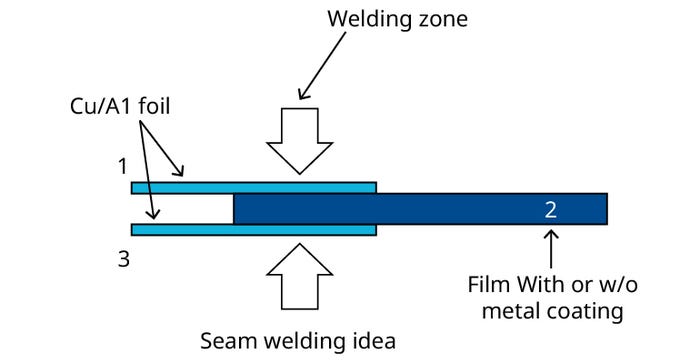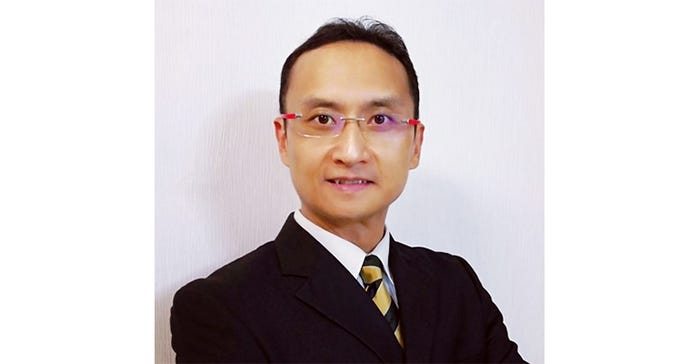Separator-Sandwiched Electrode Design Increases Li-ion Battery Safety
A novel ultrasonic-welded ‘sandwich’ electrode design offers cost, performance, and safety benefits for lithium-ion batteries.
June 28, 2023

Alex Yeung, Global Product Manager, Branson Welding and Assembly at Emerson
Lithium-ion batteries, the power source for everything from hearing aids to passenger vehicles, pack a lot of energy into relatively compact spaces. However, they’re not perfect—at least not yet. If a battery casing is breached or a battery short-circuits, batteries are vulnerable to thermal runaway—a rapid increase in battery temperature—that can ignite liquid electrolytes and cause a fire or explosion.
So, as battery designers develop newer batteries, they seek to increase not only their energy density but also their overall safety, primarily by reducing the risk of thermal events. To accomplish this, battery developers are evaluating a range of different possibilities, including a new generation of polymer separator films that can be used to insulate and protect the current collecting films built into the anodes and cathodes of batteries.
Separator film improvements
Under normal battery operation, battery separator films are designed to insulate current collectors and prevent direct contact (short circuits) between the positive and negative electrodes. At the same time, “pores” within the separator film allow for efficient ion transfer between the electrodes so the current can safely flow. However, if battery damage or malfunction results in a rapid, abnormal temperature increase, this temperature-sensitive separator film is engineered to melt. This melting process helps to protect the battery, because it closes the ion-transfer pores in the material, reduces current flow and thermal buildup, and therefore reduces the risk that the solvent-based electrolytes could ignite or explode.
While polymer separator films have been used before in batteries, most consist solely of polyolefins such as polyethylene or polypropylene, which offer good chemical stability and strength but have limitations in terms of porosity, wettability, and thermal shrinkage. The former characteristics can limit battery energy density and increase impedance, leading to slower battery charging/discharging times, while thermal shrinkage under higher-temperature conditions makes the battery more vulnerable to short-circuiting or fire.

In an attempt to overcome the limitations of polyolefin-based separator films, a new generation of battery separator films are in development. Among the most promising of these is a new, layered polyethylene terephthalate (PET)/polypropylene (PP) metalized film, which offers improved porosity (e.g., lower impedance) along with greater thermal stability at increased internal battery temperatures. The film shows promise in terms of safety—more effective suppression of short circuits and thermal runaway—and improved performance through higher current flows and faster charging/discharging.
Sandwiched-electrode design and ultrasonic welding
To take advantage of the film’s potential safety and performance benefits, battery makers are evaluating new electrode designs that “sandwiches” a layer of PET/PP separator film between extremely thin copper or aluminum current-collecting films.

This design utilizes Branson ultrasonic metal welding to bond the metal, film, and metal sandwich, welding it continuously using a rotary weld head (see Figure 2). The result is a long strip of current collector material that can later be cut into smaller strips or bands and then assembled onto electrodes using ultrasonic spot welds.
The new electrode design, together with the rotary ultrasonic welding process, offers battery manufacturers a number of potential benefits for the production of not only conventional lithium-ion electrolyte batteries but also solid-state and semi-solid-state batteries, including:
Greater safety, including higher resistance to short circuits and thermal runaway.
Material savings, since the higher porosity and lower impedance of the PET/PP metalized film enables higher current flow through thinner current collectors.
Higher battery charging/discharging rates and overall performance.
Alex Yeung is the global product manager, Branson Welding and Assembly at Emerson, leading application development, business development, and sales for Branson metal welding technology. Yeung holds a BE in mechanical engineering from Hong Kong Polytechnic University.

Emerson and Branson Welding and Assembly will be exhibiting at The Battery Show North America in Novi, MI, Sept. 12–14, 2023.
You May Also Like



